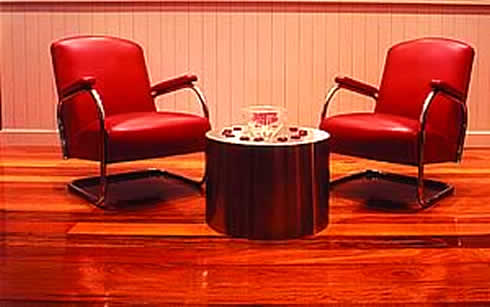NEWS ARTICLE ARCHIVES
A Toby coated floor is a thing of beauty, both enhancing your lifestyle and adding value to your home

Toby floor coatings provide an extremely tough finish that will last for years.
This web page provides some simple guidelines to assist you in maintaining your Toby floor in 'as new' condition.
SANDING AND COATING OF TIMBER FLOORS
The purpose of this web page is to provide information that will assist you, the customer, in preparing to have your floors sanded and finished and to give you an understanding of what is reasonable to expect from a professional applicator.
PREPARATION FOR SANDING AND COATING
- If building or renovating, the start date for sanding and coating floors is critical particularly in relation to other trades.
- Carpentry, electrical, plastering, plumbing and glazing must be completed before work on the floor can start.
- Any silicone or silicone based product which comes into contact with the floor after sanding but prior to any of the 3 coats will cause rejection of the coating.
Silicone is often found on the footware of plumbers and glaziers.
- It is recommended that all painting except the final coat on skirting boards be completed. The final coat can be applied to the skirtings after completion of the
floors.
- Carpets should be laid after the floors are finished.
- Unless specifically agreed to and quoted for, all furniture should be removed together with all floor coverings including staples, tacks etc.
- Gas and electrical appliances are to be disconnected by qualified personnel and removed. All pilot lights (including hot water system) are to be turned off.
- Adequate lighting and power to be available.
- Arrangements made for clear and safe access to the site.
- In many instances arrangements should be made for alternative accommodation, bearing in mind the wet floor areas which cannot be walked on and the likelihood of strong
fumes.
PREPARATION HINTS FOR THE HOME OWNER
- Seal any access areas such as fireplaces and vents that could allow dust to enter the room - use masking tape and paper.
- Cover light fittings to prevent dust from gathering on them.
- Fold curtains into green garbage bags and seal at the top.
- Cover all non-moveable furnishings using paper, drop sheets or plastic (using masking tape to secure).
WHAT YOU CAN EXPECT WHEN YOUR FLOORS ARE PROFESSIONALLY COATED
Sanding and finishing a beautiful timber floor is a skill acquired over many years. Bear in mind that, as all the work is done by hand controlled machines and applicators, there will be evidence of this in the floor. Further as you live on the floor it will gain a character and feel that is unique to your home. This is all part of the beauty of owning a timber floor.
- A thorough explanation of the work to be carried out at the time of quote.
- A comprehensive quote detailing all work to be carried out.
- Expert sanding and coating.
- Nails punched.
- Nail holes, knot holes and gaps at the end of boards to be filled with the appropriate filler.
- A coating that will provide many years of beauty providing it is properly maintained. (Refer to maintenance web page).
WHAT NOT TO EXPECT
- A completely dust free environment. Modern sanding machinery is fitted with dust collecting equipment and sanders will endeavour to clean dust away by vacuuming and
wiping down surfaces. It is virtually impossible however to totally eliminate dust from the job which has a couple of consequences:
- there will always be some dust particles that settle on the newly finished surface.
- there will be an amount of dust throughout the rest of the house.
- Removal of deep cuts such as those from carpet trimming knives or deep gouges in the boards.
- Removal of stains from within the boards and around nail holes such as animal urine and water marks.
- Filling gaps between the boards. These gaps are not filled because subsequent shrinkage and expansion in the timber will cause cracking in the filler.
- Do not expect boards damaged by borer to have the same gloss level as those in good condition.
- Do not expect any areas filled with putty to have the same feel as the timber after application of coatings.
|
|


